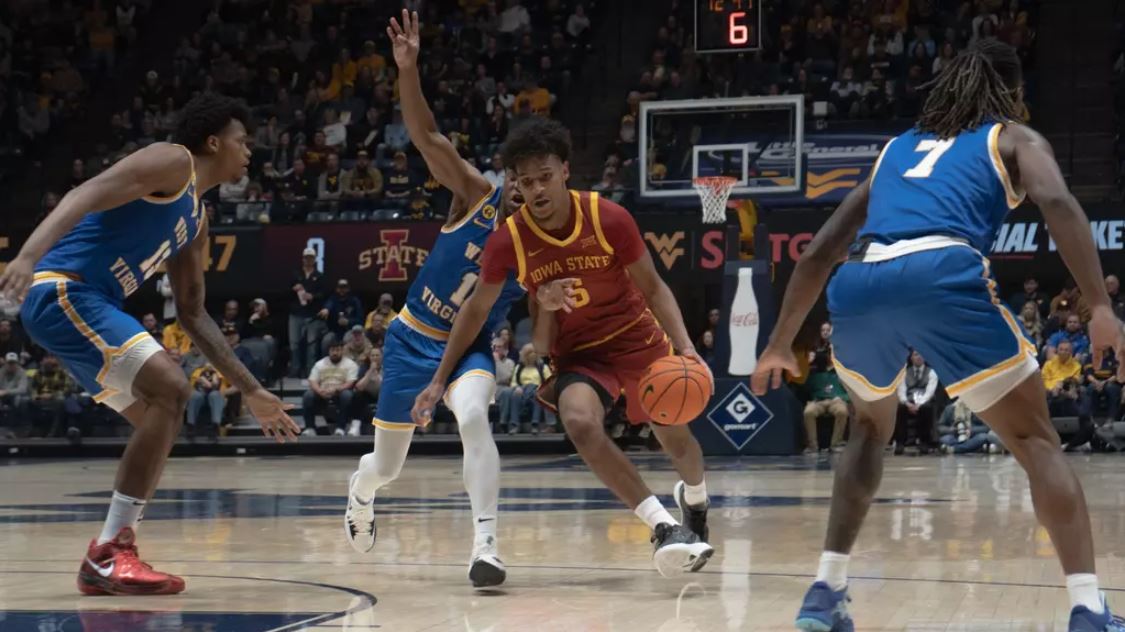Brew ha-ha
January 15, 2004
Sixteen men, ranging in experience from beginners to seasoned veterans, sit around a long table in the party room at Wallaby’s, 3720 Lincoln Way, discussing the best varieties of hops and grains. On a small table in a corner of the room are several coolers and bottles containing home brewed beer, waiting to be judged as the evening’s best.
As Mike Determan, Ames Brewers League president and graduate student in chemical engineering, adjourns the business portion of the meeting, the group speaks with one voice.
“I before E, except in brewmeister.”
It is the Ames Brewers League, a group that started meeting in March 1999 with six members.
Determan says there are three main parts to every meeting — the business portion, the technical educational topic and a competition. Tonight’s educational topic is how to judge a best-of-show competition.
“A very big part of the club is the educational part,” Determan says. “Plus, if we don’t have the educational part, we are considered bootlegging.”
Mark Simpson, a national Beer Judge Certification Program judge, gets the competition under way by explaining how it will work.
In a best-of-show competition, several styles of beer are judged against each other to see which is the best in its own category.
“You have to ask, is this a better German pils than this is a blonde ale?” Simpson said.
The members divide into groups to sample the beers and pick the top three. The beer is sampled in two-ounce plastic cups. The groups are led by Simpson and Bill VanVante, also a national Beer Judge Certification Program judge.
“When you evaluate a beer, you evaluate it on its aroma, appearance, flavor and the mouth feel,” Determan says. “The mouth feel is a combination of carbonation and how thick the beer is in your mouth. Depending on the style, there are different appropriate levels for these things. Finally, you look at overall impression and [ask if you] would you want to have another one.”
There are 26 different styles of beer recognized for competition by the Beer Judge Certification Program.
“Two selections might both be good beers, but they are totally different, so it’s kind of difficult to compare them,” Determan says. “That’s what we’re learning about tonight.”
Determan says he was still a beginner when he joined the Ames Brewers League.
“I started brewing beer when I lived in Michigan; it started as a bet with my roommate to see if I could,” Determan says. “I didn’t know what the hell I was doing at first.”
He says the first time he came to the Ames Brewers League, the chosen “beer of the month” was one he had brewed.
“I showed up my first month, and I brought some of my beer, but it was awful,” Determan says. “I had some of the other guys’ beers and I was like, ‘Holy cow, this is incredible.’ I’d never tasted anyone else’s home brew before.”
Determan says his academic background as a chemical engineering student has proven useful in brewing beer.
“It’s really interesting to see the process, because chemical engineering is about developing chemical processes,” Determan says. “I’m really able to understand what is going on in front of me.”
A club member hands Determan a plastic cup filled with a dark amber liquid.
“What have we got here?” Determan asks as he smells the beer. “Ah, a robust porter — we got the heavy end.”
Determan says the Ames Brewers League is always open to new members, and encourages those interested to attend its monthly meeting.
“If you want to learn more about brewing beer or if you don’t want to brew and just want to learn more about enjoying different types of beer, you’re welcome to come,” Determan says.
Determan is handed another small cup. This time the beer is a golden yellow.
“Now this one is an India pale ale, it’s a very strongly-hopped beer,” Determan says. “IPAs date back to colonial times, when brewers were trying to ship beers farther and farther.”
The club also hosts events throughout the year for its members. In May they hold “Big Brew Day,” a group brewing event in which everyone helps to brew a batch of beer. When the work is done, they drink the batch brewed the previous year.
The next beer Determan samples is also of a yellow hue.
“Lambic. This is probably the most eccentric beer,” Determan says. “It’s very Belgian, very unique. It’s actually a sour beer because you use wild yeast. I’ve never brewed one of these — I’ve never had the courage.”
Eric Armstrong, health physicist for environmental health and safety, has been brewing beer for the last six years.
“Mom’s home cooking is at least as good as the restaurant,” Armstrong says. “So I figured I could brew beer at least as good as the big breweries.”
Giving beer away and having it enjoyed by others is one of the most rewarding parts of brewing for Armstrong.
“It’s fun to win competitions,” Armstrong says. “But the best thing about brewing your own beer is having someone ask, ‘Can I have another?'”






